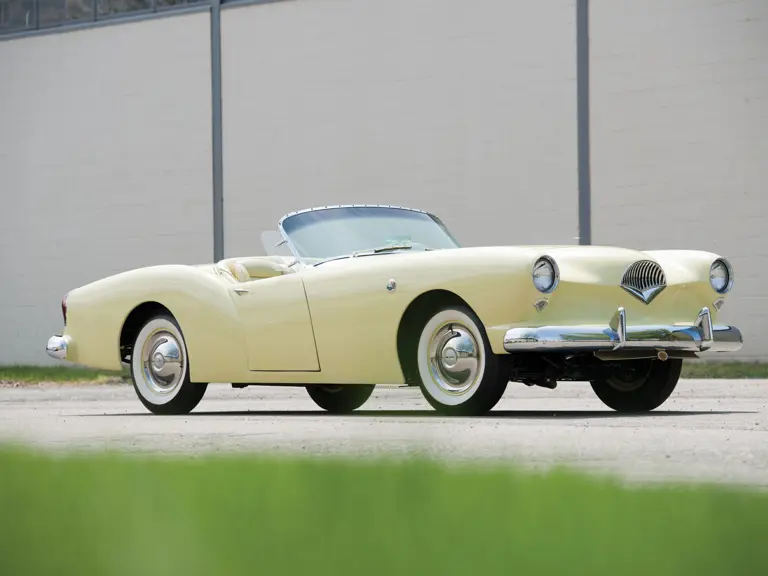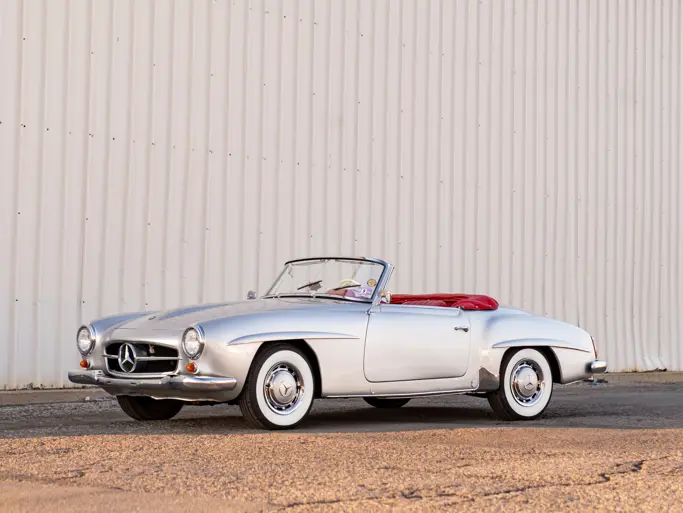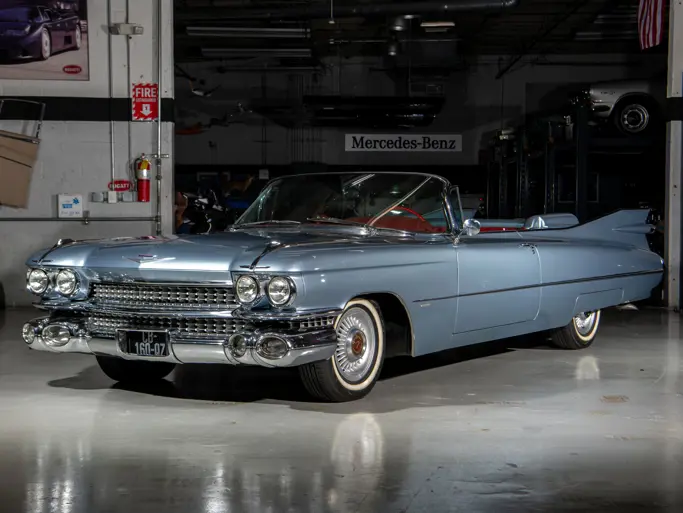Offered here is a very exceptional Kaiser-Darrin. Restored over a period of years by the Schaefer brothers of Burnsville, Minnesota, it is the product of extensive research and meticulous, “jewel-like” workmanship.
Before beginning their restoration, Stan and Andy Schaefer compiled a thick binder of information from which to work. Over the course of the project, they added to the file, so that a complete history with extensive reference material accompanies the car, as do 1954 Florida license plates. Although the restoration is now several years old, the car remains fresh and fine, the engine compartment is spotless, and incredible detail and authenticity exude from the entire car. The Yellow Satin paint is outstanding; chrome and trim are excellent, and the upholstery is exceptional. The car comes with side curtains, top and other accessories and is ready to enjoy. The power is delivered by a 161-cid, 90-hp F-head inline six-cylinder engine that is mated to a three-speed manual transmission.
The recipient of an AACA first prize, it was subsequently owned by Connecticut collector Michael Schudroff, before joining a prominent private collection, from which it is offered here. Although some 60-percent of production survives, it amounts to barely 300 cars from the nearly 500 built. The next owner will not only have one of the best – he or she will be unlikely to ever meet another on the road.
The Kaiser-Darrin had its beginnings in secret in the shops of the renowned Howard “Dutch” Darrin in California. Darrin had designed the 1951 model Kaisers, but fell out with Kaiser management. The car’s fiberglass body incorporated the hallmark “Darrin dip” along the doors, which were of a novel sliding design. To enter the Kaiser-Darrin, one twisted the door handle and pushed the door forward into the front fender.
Henry Kaiser was not initially impressed, but his wife was. Through her influence, Kaiser was convinced to put it into production. An F-head Willys six was chosen as the powerplant (Kaiser had bought Willys in 1953), and a few cars were finished toward the end of that year. At $3,668 it was expensive – more than a Series 62 Cadillac or a Lincoln Capri – but came with lots of standard equipment: a three-position landau top, tinted windshield with washers and a tachometer. Weather protection, however, was furnished by side curtains. Production began in January 1954, but sales were slow. At year’s end, about 100 remained unsold.



 | Fort Lauderdale, Florida
| Fort Lauderdale, Florida


